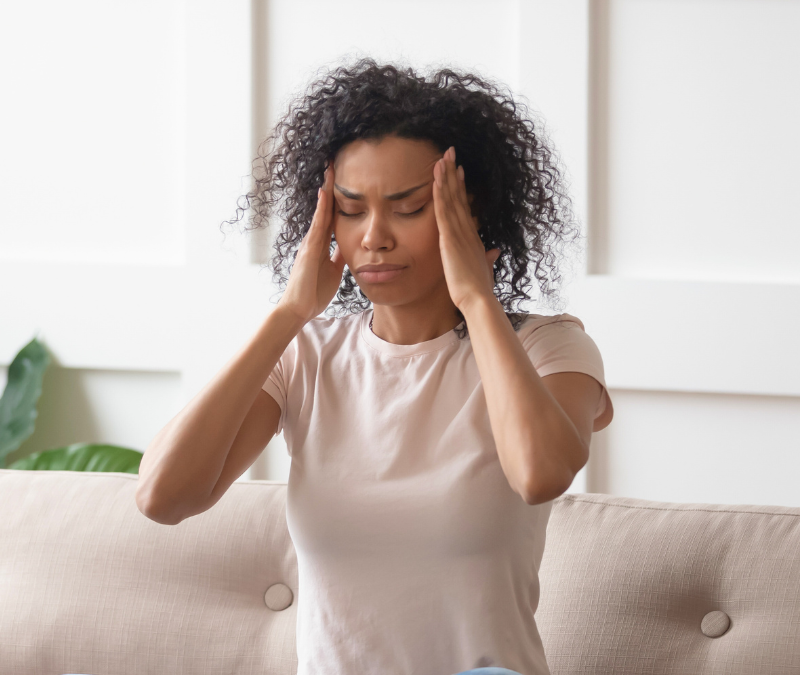What is the Connection Between Mental Health and Migraine?
Mental health disorders, migraine, and their connections
A mental health disorder, or mental illness, is a medical condition and affects a person’s mood, thinking, or behavior. 1 Common examples include anxiety, depression, and bipolar disorder. Migraine is a neurological disease and a primary headache disorder with symptoms such as headache, nausea, and sensitivity to light, sound, and smell. 2
Migraine is not a mental health disorder. Migraine is a complex neurological disease. However, the relationship between migraine and mental health is complex and likely bidirectional. 3
Migraine and mental health disorders often occur alongside one another.
Migraine and many mental health conditions are comorbid, meaning that they occur in a higher likelihood together than they occur in the general population.
There are both physiological and psychological reasons why migraine and mental illnesses occur together.
The full connection as to why these conditions frequently occur together is still not understood. According to Dawn Buse, an associate professor in the Department of Neurology at Albert Einstein College of Medicine and the director of Behavioral Medicine at the Montefiore Headache Center, “We think there might be some underlying reason, maybe a genetic reason, or the fact that both depression and migraine act off similar biochemicals in the brain and in the body that predisposes someone to have one, and then the second.” 4
Living in chronic yet unpredictable pain takes an emotional toll.
Along with the physiological connections, there is also a strong emotional component of how living with an unpredictable and disabling chronic health condition can affect your life. Chronic pain (like migraine) and mental health can mutually exacerbate each other, leading to additional physical and psychological complications. 5 People with migraine are forced to miss out on social events, job opportunities and promotions, and special occasions. This leads to social isolation, which can exacerbate mental health conditions. 6 In light of the chronic pain and poor treatment that many people living with migraine experience. It is perhaps not surprising to see higher levels of depression and anxiety among this population.
Cephalalgiaphobia refers to the cycle of fear and anxiety created by unpredictable or frequent migraine attacks.
The term cephalalgiaphobia translates to ‘fear of head pain’ and describes the anxiety of never knowing when the next migraine attack may strike. 7 Stress can trigger a migraine attack, and a migraine attack often causes additional stress. 8 People who experience regular attacks may become trapped in a vicious cycle of worrying whether they will be able to attend an event, or complete an assignment, and this stress alone can then trigger or exacerbate the next migraine attack.
Mental illness can increase the frequency of migraine attacks.
Untreated mental health conditions can exacerbate migraine and is a risk factor of chronification. Migraine becomes chronic once an individual experiences at least 15 headache days per month, 8 of which have additional migraine symptoms. 9
Migraine has connections with many mental illnesses:
Depression
People with migraine are 2.5 x more likely to experience depression. One study found that in patients with migraine, 41-47% of them also had depression. 10
Anxiety
People with migraine are 2-5 x more likely to experience an anxiety disorder than the general population, and more than half of those with migraine will experience an anxiety disorder throughout their lifetime. 11 The most common anxiety disorders in those with migraine are generalized anxiety disorder, panic disorder, and obsessive compulsive disorder. 12
Post-Traumatic Stress Disorder
Also an anxiety disorder, post-traumatic stress disorder (PTSD) is also more common in those with migraine. Those with episodic migraine are 3-4 x more likely to also experience PTSD. 13 Those living with both migraine and PTSD are more likely to lose more work days and experience greater disability compared to those with migraine and no PTSD. 14 Interestingly, both migraine and PTSD are 3x more likely in females than males. 15
Bipolar Disorder
People with migraine with aura are about 3 x more likely to also have bipolar disorder. In addition, of those living with bipolar disorder, about 1/3 also have migraine disease. 16 Those with comorbid migraine may have a higher risk of an unstable rapid cycling course of their bipolar disorder. 17
Suicide
Those with migraine have 3 x the rates of suicide than the general population. 18 The chances of suicidal ideation, suicide plans, and suicide attempts increase in those with migraine. 19
(If you are experiencing suicidal thoughts, please reach out to your doctors, loved ones, or the Suicide Hotline at 1-800-SUICIDE , 1-800-784-2433.)
Other Psychiatric Conditions
Migraine is more common in those who have suffered from abuse, whether the abuse was emotional, sexual, physical, or neglect. 20 Those with migraine are more likely to live with attention deficit hyperactivity disorder (ADHD). 21 In addition, there are many other psychological comorbidities of migraine.
Stigma of both migraine and mental health disorders prevent members from seeking help.
Stigma prevents people from disclosing these conditions and requesting support. Less than 30% of employees feel comfortable disclosing a mental illness to their employer, and less than 25% feel comfortable notifying human resources. 27 The stigma of migraine also prevents members from seeking help from medical providers.
If mental health disorders, migraine, and / or other health issues continue to go unaddressed, deteriorating health and burnout amongst members may occur.
What is burnout, and how can it be prevented?
According to Forbes, burnout is the “extreme physical and emotional exhaustion that results in a lack of professional efficacy, increased cynicism, lack of engagement and depleted energy.” 30
Burnout worsens members’ medical conditions.
Burnout leaves members at risk of worsening current medical conditions like migraine and mental health disorders, and potentially triggering new medical conditions such as high blood pressure, insomnia, substance abuse, heart disease, and vulnerability to contagious illnesses. 31
Take action today by contacting Migraine Well to best protect your members living with migraine, mental health disorders, and burnout.

